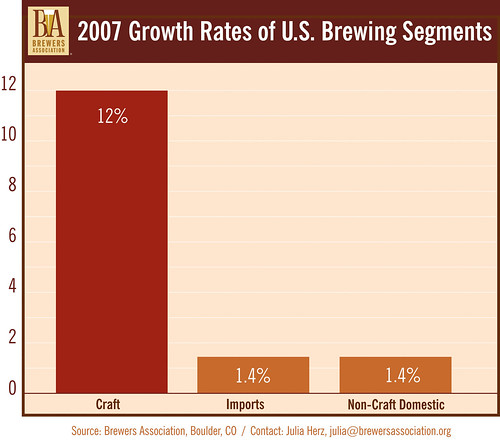“Can you believe how many breweries there are in the Twin Cities now? It seems like only five years ago there was only Summit.”
I was talking to my friend the other day at Republic bar on the West Bank, as we sat in awe of the seemingly infinite array of taps.
“Yeah, I know,” He agreed. “I wonder if Summit is hurting from all the competition now.”
“Hell no,” I declared. “I just read somewhere that craft beer is still only 6% the total beer market. There’s tons of room to grow.”
It was true. Despite all the publicity and buzz, despite all the new tiny interesting breweries opening up in Northeast or Minnetonka or Stillwater or Saint Louis Park, in the big picture, craft beer is still just the condensation forming on a bottle of Bud Light. With a 6% market share, the amount of small local breweries could double and double and double again and the big breweries would still be taking up half of the market.
It got me thinking about bicycling in the Twin Cities. The total commute mode share in a high profile bicycling place like Portland, Oregon is also about 6%. (In Minneapolis its closer to 4%, maybe higher if you include non-work trips.)
Despite all the attention and buzz around bicycles, they’re still just a diminutive tiny fraction of the total mode share, and in order to reach the kind of market share you find in places in Northern Europe, the amount of bicycles in Minneapolis would have to grow six-fold.
Think about that for a second. In both of these cases, all the recent activity over the past few years remains negligible when you look at the big picture. Imagine a city with six times the number of quality bike lanes, six times the number of people riding bicycles all around town. What would it look like? How much bicycle parking would you need to create? (Bike corrals are easy to build.) How much would the culture around streets shift as more and more people found ways to leave their cars in their driveway and get easy exercise instead? How safe and comfortable would bicycling be if it became ubiquitous, and began to rival automobile mode share in our cities?
Similarly, imagine a city with six times more micro brews. Every neighborhood could have its own little brewpub, where you knew the men or women making the beer, and the world would be filled with new seasonals, tongues paved with an endless variety of stouts and lagers. Imagine the acronym "MGD" ceasing to have meaning.
I mentioned this to my friend, how both bikes and beer were still stuck at 6% of the market, and had seemingly limitless possibilities for growth.
“That makes sense. They’re probably the same people, riding the bicycles and drinking the good beer,” he replied.
(Gulp. Guilty!)
There just might be a parallel between only drinking Budweiser and driving your Chevy Tahoe everywhere. In both cases, it's safe and boring. And in both cases, more and more people are opening up their senses to a richer variety of experience. Whether that means trying a new hoppy IPA or enjoying the fresh air and sunshine on your way to the store, in both cases you’ve traded in a bland pre-packaged commodity for something far more urban and urbane, a world filled with all the varieties of experience. For craft beers and urban bicycles, there is almost infinite room to grow. The sky is the limit.



I like this analogy. I've been using the Twin Cities' craft beer scene as an analogy for growth lately - I like to think the same thing could be done with bicycles.
ReplyDeleteI have been in the twin cities "craft beer as an analogy, the rose - I think you can do the same thing (bicycle).
ReplyDelete